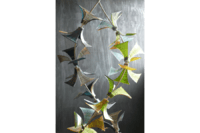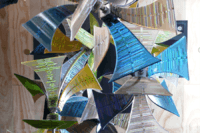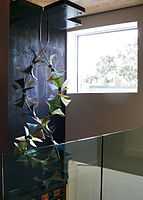Te Rongo Kirkwood
Te Rongo Kirkwood is a mixed-media artist currently specialising in kiln-formed cold-worked glass.
Glass as a medium is a match for Te Rongo’s love of fine detail, technical mastery and experimentation. It has been the ideal vehicle for her own interpretation and expression of Maori esoteric ideas and broader universal symbolism. Threads of her Scottish and Maori heritage are woven together to produce artworks that are a testament to hard toil, soul-searching explorations and technical experimentation.
Te Rongo is the first artist to transform the traditional maori cloak form into a sculptural object in glass. Her Ka Awatea series is in exhibition at the de Young Fine Arts Museum in San Francisco until June 2015. Here the play of light and glass express the artists personal journey through the cycle of life. A second series of cloaks, Nga Tuaitara O Taikehu, featured in the opening exhibition at Te Uru Gallery in Auckland, New Zealand entitled 'Te Hau a Uru: A message from the west' alongside works by Philip Dadson, Brett Graham, Lisa Reihana and Tanya Ruka. Te Rongo has a deep appreciation for the sacredness imbued within traditional taonga. The ceremonial maori cloak form is evocative and powerful, carrying within it expressions of spiritual meaning and ancestral whakapapa and knowledge.
Her most recent public commission was Te Aho Maumahara for the stunning new Devonport library in Auckland, New Zealand. This sculpture honours Princess Te Puea Herangi and her peaceful opposition to the imprisonment of Waikato men at Fort Takapuna who refused to be conscripted. The two strands of puhirere, one morning, one evening reference feather garlands hung from the taurapa or sternpost of a war canoe honour Te Kei o Te Waka Tainui, the sternpost of the Tainui canoe of which this area forms part. Designed around the pattern of the sound waves of the Pai Marire, the sculpture references the resonance of the ancient karakia which were chanted by Te Puea and her female companions at 7 o'clock in the morning and evening to those men imprisoned. The commissioned work was created in kiln-formed sheet glass using approximately 17,600 hand placed stringers, 88 glass ‘feather’ elements in total.
Te Rongo is currently working on a number of projects, including an evolution of the cloak form and expanding her mixed-media approach.


